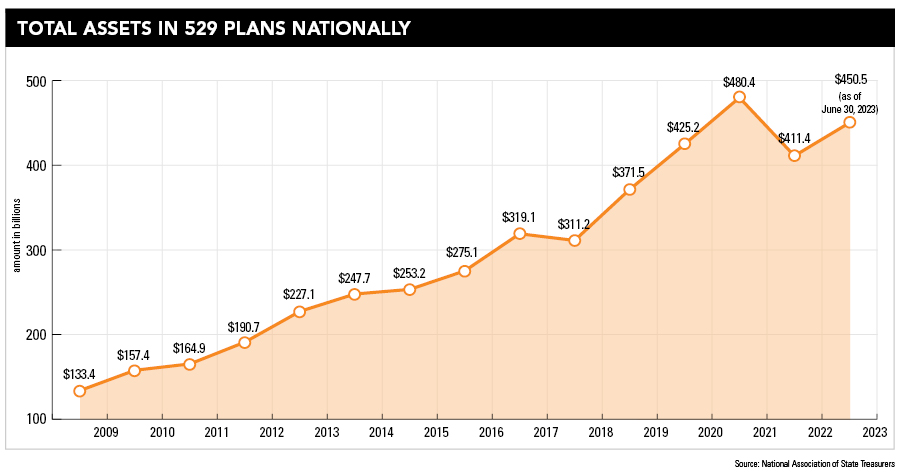

Roger Bannister ran the first four-minute mile in 1954 with a time of 3:59.4. The Englishman’s shattering of the “four-minute barrier” was globally heralded and widely covered by the international press.
At the same time Bannister was rewriting the record books in the UK, over the Pond, in Philadelphia, the University of Pennsylvania was charging $700 for yearly tuition, plus $835 for room and board, a “general” fee of $75, another $50 for books, and, for good measure, a $10 library fee.
Fast forward seventy years and Bannister’s feat has been achieved by a modest 1,755 athletes and the mile record has been lowered by a relatively meager 16 seconds, or about 6.6 percent.
Meanwhile, the University of Pennsylvania is coming in at a reported $92K for tuition, expenses, and room and board in 2024 – or about 55 times higher than back in Bannister’s day.
And the Ivy League educator is not alone in eclipsing the $90K barrier this year. Estimated all-in prices at Wellesley, USC, Brown, Dartmouth, BU and a host of other prestigious American colleges and universities have crashed the $90K mark.
Yes, it’s breathtaking for a parent even to think about.
It’s also inescapable if it’s a school that that parent’s child has their heart set on attending.
For financial advisors, however, the new stratospheric sticker price for a premier college diploma offers opportunity. Guide that client past that $90K mark – for all four undergraduate years, of course – and that client won’t soon forget it.
Unlike Bannister’s mere mile, saving for college is more like a marathon, according to JJ Feldman, co-head of wealth management at Helium Advisors.
“We are talking to clients early in the process, when they first have children,” said Feldman. “We are letting them know the options available, and explaining the pros and cons. Having a long runway gives the clients ample time to compound some meaningful dollars.”
Rosalyn Glenn, financial planner at Prudential Advisors, agrees that the mountainous cost of college requires planners to make sure their clients know the benefits of starting their savings efforts early, as well as the perils of putting those efforts off.
“For those with younger children, we are definitely having the conversations around the necessity of saving early and consistently in order to be prepared,” said Glenn. “For those with college-ready children, the conversations are harder, and the alternative considerations include the students taking on a large part of the responsibility for paying for their own education.”

Kelly Milligan, managing partner at Quorum Private Wealth, part of Sanctuary Wealth, instructs clients to start a dedicated college savings account as soon as the parents know the child’s tax ID number. She also advocates for making saving for college a family affair from the very start.
“Anyone can contribute to a child’s college savings account, including grandparents, aunts, uncles or friends,” said Milligan. “These 529 accounts are excellent accounts into which may be deposited birthday or holiday checks.”
Christopher Paglia, founder of NavaSync Private Wealth, a partner firm of Sanctuary Wealth, is also a firm proponent of getting grandma and grandpa on board – not just for the child’s sake, but for their own when it comes to limiting estate taxes.
“Individuals may contribute as much as $90,000 to a 529 plan in 2024, or $180,000 for couples, if they treat the contribution as if it were spread over a five-year period,” said Paglia.
“The five-year election must be reported on Form 709 for each of the five years in order to circumvent gifting complications, making this a great estate-tax planning strategy for parents and grandparents,” said Paglia. “In this instance they are able to shelter a large amount of assets from estate taxes while maintaining control of the funds in a 529 account.”
Most advisors agree that the 529 plan is the cornerstone on which to build for college saving. For those who may have forgotten, a 529 college savings plan is a state-sponsored investment plan that enables one to save money for a beneficiary and pay for education expenses. Funds held in a 529 plan can be withdrawn tax-free to cover nearly any type of college expense.
Beyond those basics, the process becomes trickier – which, once again, provides advisors with the chance to prove their worth.
Tony Isola, financial advisor at Ritholtz Wealth Management, believes there are numerous ways to help a client shave the cost of college. The first, in his view, is understanding the concept of merit aid.
“Merit differs from needs-based aid because this money is not limited to low-income students. A millionaire can receive merit aid. It’s based on grades and extracurricular activities, not income,” said Isola.
Isola says too many high-earning parents mistakenly neglect to fill out the FAFSA application, thinking they won't qualify for funds. Nevertheless, some merit aid is based on simply completing that application.
“That’s another example of following the crowd going terribly wrong,” said Isola.
Ed Stober, senior wealth advisor at Nepsis, recommends saving in two ways – first by leveraging a combination of the tax advantages of 529 plans, and then through the flexibility of accessing taxable assets.
“Save outside of the 529 plans by investing in the stocks of quality businesses via brokerage accounts,” said Stober. “If you don’t know how to select a stock of a quality business, consider transferring that responsibility to the services of a Nepsis Wealth Advisor. Remember that there are multiple ways to cover college costs, including scholarships, grants, work-study programs, and student loans.”
Setting up a Roth IRA is another option outside the 529 plan, says Helium’s Feldman.
“When your kids start earning income from side jobs or summer jobs, establish a Roth,” said Feldman. “The funds grow tax-free, and they can be taken out tax-free for qualified educational expenses. Also, you have total flexibility as to what you can invest in.”
Another out-of-the-box idea is to set up a permanent life insurance policy, such as an Indexed Universal Life Insurance Policy (IUL), according to Feldman.
Get the minimum amount of face insurance (no underwriting is necessary) so the vast majority of the money can go into the investment bucket. The money compounds tax-free, and the money can be taken out tax-free, via a loan, to pay for college expenses.
“There is tremendous flexibility here,” said Feldman. “And the money can be borrowed for other expenses as well, such as computers and even summer camps.”
Additionally, Andy Arnold, CEO of Centerline Wealth Advisors, says parents may consider saving large chunks of performance pay bonuses from employers in more accessible vehicles like CDs or Treasuries, especially as the college goal nears.
"In this way, the parent can commit these resources to college if they are needed, but can also re-direct them should the child decide not to finish college or transfer to a less-expensive school,” said Arnold. “Flexibility is the order of the day with this approach.”
Saving for a child’s college education is not the only momentous financial challenge parents face over the course of their lifetimes. They also need to save for their own retirement. In other words, they are running two marathons at once.
Beat that Bannister!
It is unlikely that the average American family will be able to pay the costs of an expensive private secondary education completely without it affecting their own financial and retirement plans. Still, Prudential’s Glenn shies away from suggesting parents use their retirement assets for college funding.
“While understanding that parents don’t want their children saddled with large amounts of student loan debt, children have a better chance of recovery than parents do,” said Glenn. “After all, you can borrow for college, but you can’t borrow for retirement.”
NavaSync’s Paglia put three children through private colleges over the past eight years, so he “personally and professionally” understands the dual challenges of saving for both college and retirement.
First and foremost, he recommends parents and students maintain realistic expectations when it comes to receiving grants and scholarships to attend college in general. Even if a student receives a grant, it tends to be a relatively small percentage of the overall cost when you include room and board, especially at the most elite and expensive colleges and universities, to which thousands of prospective and talented students apply.
“There simply are no magic tricks when it comes to paying for college. If you don’t expect a large inheritance or plan on winning the lottery, then you need to work with a trained professional,” said Paglia.
Finally, as Feldman points out, the kids themselves can get a jump on their own retirement savings through the use of a 529 plan.
“The fact that now $35K of unused 529 funds can be rolled back into a Roth tax-free and penalty-free for your child is huge, as long as the 529 is open for 15 years,” said Feldman. “This makes the 529 one of the great options clients can use. The 35K can’t all be rolled to a Roth at once, but nonetheless this is a great way to set up a nest egg for your child.”

Relationships are key to our business but advisors are often slow to engage in specific activities designed to foster them.

Whichever path you go down, act now while you're still in control.

Pro-bitcoin professionals, however, say the cryptocurrency has ushered in change.

“LPL has evolved significantly over the last decade and still wants to scale up,” says one industry executive.

Survey findings from the Nationwide Retirement Institute offers pearls of planning wisdom from 60- to 65-year-olds, as well as insights into concerns.
Streamline your outreach with Aidentified's AI-driven solutions
This season’s market volatility: Positioning for rate relief, income growth and the AI rebound
